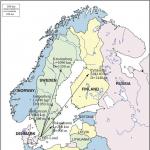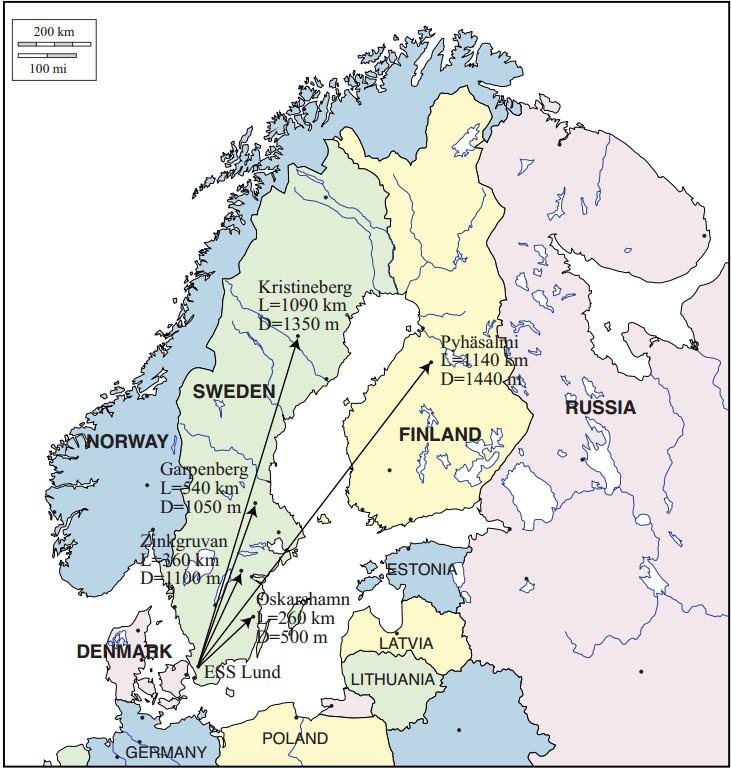Paper of the month: A Very Intense Neutrino Super Beam Experiment for Leptonic CP Violation Discovery based on the European Spallation Source Linac: A Snowmass 2013 White Paper

A famous and interesting property of neutrinos is how little they interact and
hence their difficulty to be detected. As such our knowledge in this sector
of particle physics is limited. There are three neutrino flavors...
October 28, 2013 by admin
A famous and interesting property of neutrinos is how little they interact and hence heir difficulty to be detected. As such our knowledge in this sector of particle physics is limited. There are three neutrino flavors and they oscillate among each other, a phenomenom that can happen only if they have masses. In recent years, experimental neutrino physics have measured with high precision many of the parameters that describe the mixing in the neutrino sector. Only two parameters remain still unknown: the sign of one of the two mass splittings, which drive the neutrino oscillations and determines the mass hierarchy of the neutrino mass spectrum, and the CP violating
phase, which measures whether or not the neutrino sector violates a symmetry known as the Charge-Parity symmetry of the Standard Model. This CP violating phase could explain why in the current universe the amount of antimatter is negligible, despite the fact that matter and antimatter are produced in equal amounts in the early universe.
To accurately measure these two parameters we will need a new generation of advanced neutrino experiments. Many of them are being planned and one of the proposed experiments is outlined in this paper, that of the possibility to extend the European Spallation Source to include a neutrino beam.
The European Spallation Source (ESS) is an experiment under construction in Lund, Sweden, which plans to use an intense beam of neutrons for a wide variety of experiments, from pharmaceutical research to the space industry. This paper outlines the possibility of upgrading the ESS experiment to also include a neutrino experiment.
As the ESS needs to provide a beam for many other experiments, only a small amount of the protons can be taken for neutrino purposes. Modification of the ESS beamline is significantly cheaper than building a new facility from scratch, and an upgrade of the 5 MW ESS proton beam to a 10 MW beam would be all that is needed to create a world class experiment. The fact that the ESS is under construction and not merely a concept favors enormously the feasibility of the neutrino project.
The core of the plan is to syphon off a small fraction of the protons used in the ESS, into a separate purpose built complex where they will collide with a fixed target to create a beam of pions (an unstable particle produced when protons smash off atoms). These pions decay, producing an intense beam of neutrinos. The ESS with a 10 MW proton beam would deliver 3 × 1023 protons per year of running, without disrupting the proton flow for all the other experiments that must run at the ESS. The neutrino beam will then travel through the earth’s crust towards a detector some hundreds of kilo-
meters away. The detector must be many meters underground to avoid the cosmic ray background.
Some calculations must be performed for optimizing the experiment properties. One of the parameters that should be chosen is the length of the path the neutrinos will take from the ESS complex to the underground mine where the detector is located (neutrino baseline). The best expectations are obtained for baselines between 400 km and 500 km. For values of the CP violating phase phase between ±45 to ±135 the significance can reach more than 5σ (which is usually the threshold when a new discovery is confirmed), and this result is better than what any current experiment can reach. This
experiment (with properties optimized for measuring CP phase) can also determine the mass hierarchy with 3σ significance, but combining its results with other experiments a larger significance to the neutrino mass hierarchy could be achieved.
The detector would be a huge 103 m x 63 m cylindrical tank of water surrounded by incredibly sensitive photo multipliers to detect the photons emitted by electrons when a neutrino interacts with the water’s nuclei. This large detector can also be used for astroparticle physics and proton lifetime measurements. Since the detector will be placed deep underground in an old mine away from background radiation it will also allow detection of neutrinos produced in supernova explosions.
Authors: Marija Kekic (IFIC) and Mark Ross-Lonergan (IPPP)

Figure 1: Location of several mines that would be plausible for the detector site.





